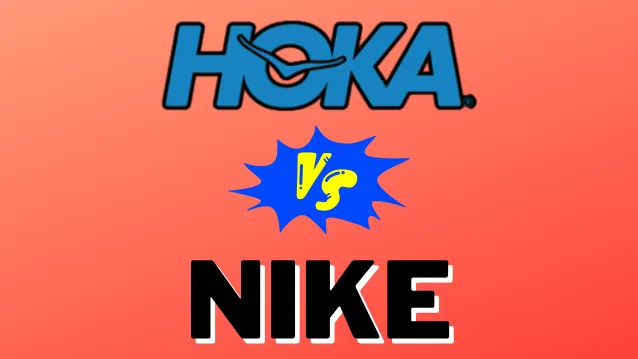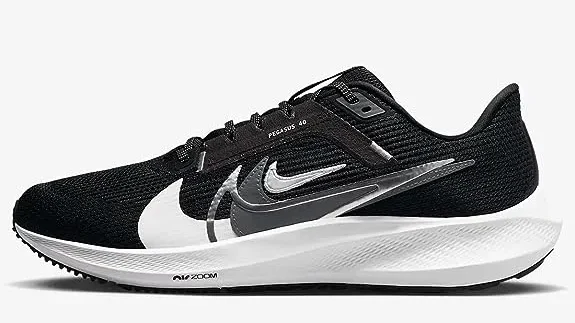When it comes to running shoes, Hoka and Nike are two titans of the industry. They both make excellent running shoes catered to different types of runners. This makes choosing between them a challenge.
This article will compare the key features of Hoka and Nike, from comfort and fit to popularity and target market. Read on to find out which brand may be better suited for you!
Comparison Table Between Hoka And Nike:
| Feature | Hoka | Nike |
|---|---|---|
| Founded In | 2009 | 1964 |
| Comfort & Fit | Maximum cushioning, wide toe box | Varies by shoe, generally comfortable |
| Color Options | Limited | Extensive palette |
| Durability | Durable foam and outsoles | Generally durable construction |
| Performance | Optimized for cushioning | Designed for speed and response |
| Design & Style | Thick, sculpted midsole | Varied; iconic Swoosh logo |
| Popularity | Growing popularity among trail and long distance runners | Dominant market share across performance sports |
| Best Selling Model | Bondi 8 | Air Force 1 |
Hoka Overview:
Founded in 2009 by Nicolas Mermoud and Jean-Luc Diard, Hoka One One burst onto the scene with their super thick midsoles, aiming to provide maximum cushioning for runners.

Initially, their oversized design was polarizing. But as more runners experienced the plush ride, Hoka gained a cult following among ultramarathoners and trail runners.
Hoka remains focused on cushioning and stability to create a smooth, comfortable run. Signature technologies like the Meta-Rocker outsole encourage a natural gait cycle and transition. The roomy toe box allows your feet to splay and relax over long miles.
For runners who struggle with joint pain and hard impact, Hoka’s pillow-like foam brings sweet relief. The soft landings and energetic rebound make each stride feel effortless. It’s easy to see why Hokas have a reputation for comfort.
Hokas aren’t the most flexible shoe due to the higher platform. And the bulky silhouette isn’t for everyone. But for runners craving a cushy feel, Hoka delivers plush shoes that can go the distance in blissful comfort.
Nike Overview:
Nike was founded in 1964 by Bill Bowerman and Phil Knight as Blue Ribbon Sports, initially importing Japanese running shoes before establishing their own footwear manufacturing in the 1970s.

Nike popularized innovations like the waffle outsole and air cushioning technology, earning the brand a reputation for performance and style.
Today, Nike is the largest athletic shoe company in the world, producing footwear and apparel for virtually every sport imaginable.
In running specifically, Nike is the undisputed market leader, offering an enormous range of shoes tailored for competition, training, and every day running at varying price points. The Nike Pegasus, introduced in the 1980s, remains one of their most ubiquitous neutral trainers.
Other pioneering technologies include Shox columns for impact absorption and lightweight Flyknit uppers. As a global brand active in sports science research, Nike employs state-of-the-art product testing to create performance-driven footwear.
Recent releases like the Alphafly NEXT% racing shoe with carbon fiber plates demonstrate Nike’s commitment to pushing boundaries. For runners of all levels, Nike offers both cutting-edge models as well as classic staples like the Air Zoom Pegasus.
With its iconic Swoosh logo and pervasive marketing and sponsorship, Nike has become one of the most recognizable brands worldwide.
Major Differences Between the Brands:
So far it has been an exciting matchup between Nike and Hoka. Let’s now compare both in terms of strengths and weaknesses to determine which brand is the better choice for your needs.
1) Comfort and Fit
Hoka excels in providing soft, pillowy cushioning thanks to the extra thick midsoles. This makes Hokas a great option for runners who want plush comfort for long distances or recovery days. They also have a wide toe box that allows natural toe splay.
On the other hand, Nike offers a more varied fit and feel depending on the shoe. Models like the Pegasus provide a balanced, medium-cushioned ride while performance shoes prioritize responsiveness over softness. For easy comfort over many miles, Hoka has the advantage.
Also Check Out: Topo Athletic VS Hoka: Which Is Better?
2) Durability and Performance
Both brands are known for durable outsoles and midsole materials that maintain their cushioning and bounce over hundreds of miles.
In terms of performance, Nike tends to offer greater ground feel and responsiveness thanks to FIRM technologies in their foam as well as features like a full-length carbon plate in the Vaporfly.
Hokas prioritize cushioning and impact absorption over ground feedback. Serious racers looking to PR may prefer Nike’s snappy, tuned foam, while Hoka fans appreciate the forgiving comfort for marathon distance and beyond.
Also Check Out: Allbirds VS Hoka: Which Is Better For You?
3) Price
Hoka and Nike shoes range from affordable $100 models to premium pairs costing $250 or more. Nike does have more budget-friendly options under $100.
The average Hoka costs around $50 more than the average Nike, but the brand offers frequent discounts. For the same cushioning tech like ZoomX foam, Nike and Hoka models cost around the same.
Overall, Nike wins for having lower-priced models appealing to casual runners on a budget.
Also Check Out: Fitville VS Hoka: Which Is Better?
4) Design and Style
When it comes to looks, people tend to either love or hate the distinct Hoka thick-soled silhouette. Their shoes look almost like they have high platform soles compared to a more conventional running shoe shape from brands like Nike.
For some, the maximalist Hoka look is perfect for standing out. Others prefer the athletic styling of most Nike models with the iconic Swoosh logo. There are no clear winners here, just personal preference!
Also Check Out: Gravity Defyer VS Hoka: Which Is Better?
5) Popularity
As one of the major players in athletic shoes for over 50 years, Nike utterly dominates the market. It’s by far the most popular shoe brand amongst runners, as well as for other sports.
Hoka, as the new kid on the block, has a fraction of Nike’s customer base and brand recognition. However, Hoka’s popularity has rapidly grown among niches like trail runners and ultramarathoners who appreciate the cushioning.
While still a small player overall, Hoka’s fanbase is growing every year.
Also Check Out: Hoka VS Skechers: Which Is Better?
6) Target Market
Nike has an immensely diverse target audience, marketing performance shoes for virtually every sport and fitness activity imaginable. Their shoes appeal broadly to hardcore competitors and recreational athletes alike.
Hoka is more specialized, targeting runners looking for maximum cushioning. Their shoes cater especially well to heavier runners and those logging high weekly mileage or completing ultramarathons.
Both brands offer models for all types of runners, but Nike’s target demographic covers a much wider spectrum.
Final Verdict:
In the battle between these two running shoe giants, there is no single winner that will be ideal for every runner. The choice between Hoka and Nike comes down largely to individual priorities around comfort, fit, budget, and running needs.
Runners who want soft cushioning for high mileage days will feel right at home in Hokas. Nike offers greater versatility with a wider range of technologies and fits across different models. Their Pegasus shoe line remains a gold standard in the running world.
At the end of the day, it pays to get an in-store gait analysis and try shoes from both brands. With smart fit guidance and keeping an open mind, you’re sure to find your perfect shoe match whether it’s Hoka or Nike.



